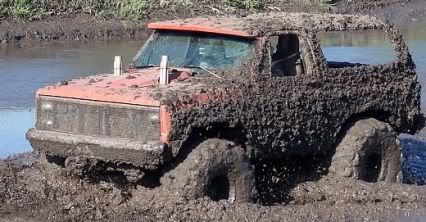NEWS FLASH: C.A.R.S. Program Statistics
August 5, 2009
Dealer Transactions
Number Submitted: 184,304
Dollar Value: $775.2M
Top 10 New Vehicles Purchased
1. Toyota Corolla
2. Ford Focus FWD
3. Honda Civic
4. Toyota Prius
5. Toyota Camry
6. Hyundai Elantra
7. Ford Escape FWD
8. Dodge Caliber
9. Honda Fit
10. Chevrolet Cobalt
New Vehicles Manufacturers
General Motors 18.7%
Toyota 17.9%
Ford 16.0%
Honda 11.6%
Chrysler 10.6%
Nissan 7.0%
Hyundai 6.6%
Kia 3.8%
Mazda 2.3%
Subaru 2.2%
Volkswagen 1.9%
Suzuki 0.4%
MINI 0.3%
Mitsubishi 0.3%
Smart 0.2%
Volvo 0.1%
All Other 0.1%
Nearly half of new vehicles purchased under the program were from the Big Three.The Big Three’s share in this program (45%) is equivalent to their overall share in the auto market (about 45%). Four of the top ten selling vehicles are manufactured by the Big Three. Of non-Big Three purchases, preliminary analysis suggests that well over half of these new vehicles were manufactured in the United States .
Top 10 Trade-in Vehicles
1. Ford Explorer 4WD
2. Ford F150 Pickup 2WD
3. Jeep Grand Cherokee 4WD
4. Jeep Cherokee 4WD
5. Dodge Caravan/Grand Caravan 2WD
6. Ford Explorer 2WD
7. Chevrolet Blazer 4WD
8. Ford F150 Pickup 4WD
9. Chevrolet C1500 Pickup 2WD
10. Ford Windstar FWD Van
Vehicles Purchased by Category
Passenger Cars: 88,814
Category 1 Truck: 52,391
Category 2 Truck: 8,601
Category 3 Truck: 295
Thus far, 83% of trade-ins under the program are trucks, and 59% of new vehicle purchases are cars. The program is working far better than anyone anticipated at moving consumers out of old, dirty trucks and SUVs and into new more fuel-efficient cars.
Vehicle Trade-in by Category
Passenger Cars: 24,903
Category 1 Truck: 99,186
Category 2 Truck: 24,931
Category 3 Truck: 1,081
Average Fuel Economy
New vehicles Mileage: 25.3 MPG
Trade-in Mileage: 15.8 MPG.
Overall increase: 9.6 MPG, or a 61% improvement
Cars purchased under the program are, on average, 21% above the average fuel economy of all new cars currently available, and 63% above the average fuel economy of cars that were traded in. This means the program is raising the average fuel economy of the fleet, while getting the dirtiest and most polluting vehicles off the road.
August 5, 2009
Dealer Transactions
Number Submitted: 184,304
Dollar Value: $775.2M
Top 10 New Vehicles Purchased
1. Toyota Corolla
2. Ford Focus FWD
3. Honda Civic
4. Toyota Prius
5. Toyota Camry
6. Hyundai Elantra
7. Ford Escape FWD
8. Dodge Caliber
9. Honda Fit
10. Chevrolet Cobalt
New Vehicles Manufacturers
General Motors 18.7%
Toyota 17.9%
Ford 16.0%
Honda 11.6%
Chrysler 10.6%
Nissan 7.0%
Hyundai 6.6%
Kia 3.8%
Mazda 2.3%
Subaru 2.2%
Volkswagen 1.9%
Suzuki 0.4%
MINI 0.3%
Mitsubishi 0.3%
Smart 0.2%
Volvo 0.1%
All Other 0.1%
Nearly half of new vehicles purchased under the program were from the Big Three.The Big Three’s share in this program (45%) is equivalent to their overall share in the auto market (about 45%). Four of the top ten selling vehicles are manufactured by the Big Three. Of non-Big Three purchases, preliminary analysis suggests that well over half of these new vehicles were manufactured in the United States .
Top 10 Trade-in Vehicles
1. Ford Explorer 4WD
2. Ford F150 Pickup 2WD
3. Jeep Grand Cherokee 4WD
4. Jeep Cherokee 4WD
5. Dodge Caravan/Grand Caravan 2WD
6. Ford Explorer 2WD
7. Chevrolet Blazer 4WD
8. Ford F150 Pickup 4WD
9. Chevrolet C1500 Pickup 2WD
10. Ford Windstar FWD Van
Vehicles Purchased by Category
Passenger Cars: 88,814
Category 1 Truck: 52,391
Category 2 Truck: 8,601
Category 3 Truck: 295
Thus far, 83% of trade-ins under the program are trucks, and 59% of new vehicle purchases are cars. The program is working far better than anyone anticipated at moving consumers out of old, dirty trucks and SUVs and into new more fuel-efficient cars.
Vehicle Trade-in by Category
Passenger Cars: 24,903
Category 1 Truck: 99,186
Category 2 Truck: 24,931
Category 3 Truck: 1,081
Average Fuel Economy
New vehicles Mileage: 25.3 MPG
Trade-in Mileage: 15.8 MPG.
Overall increase: 9.6 MPG, or a 61% improvement
Cars purchased under the program are, on average, 21% above the average fuel economy of all new cars currently available, and 63% above the average fuel economy of cars that were traded in. This means the program is raising the average fuel economy of the fleet, while getting the dirtiest and most polluting vehicles off the road.

Comment